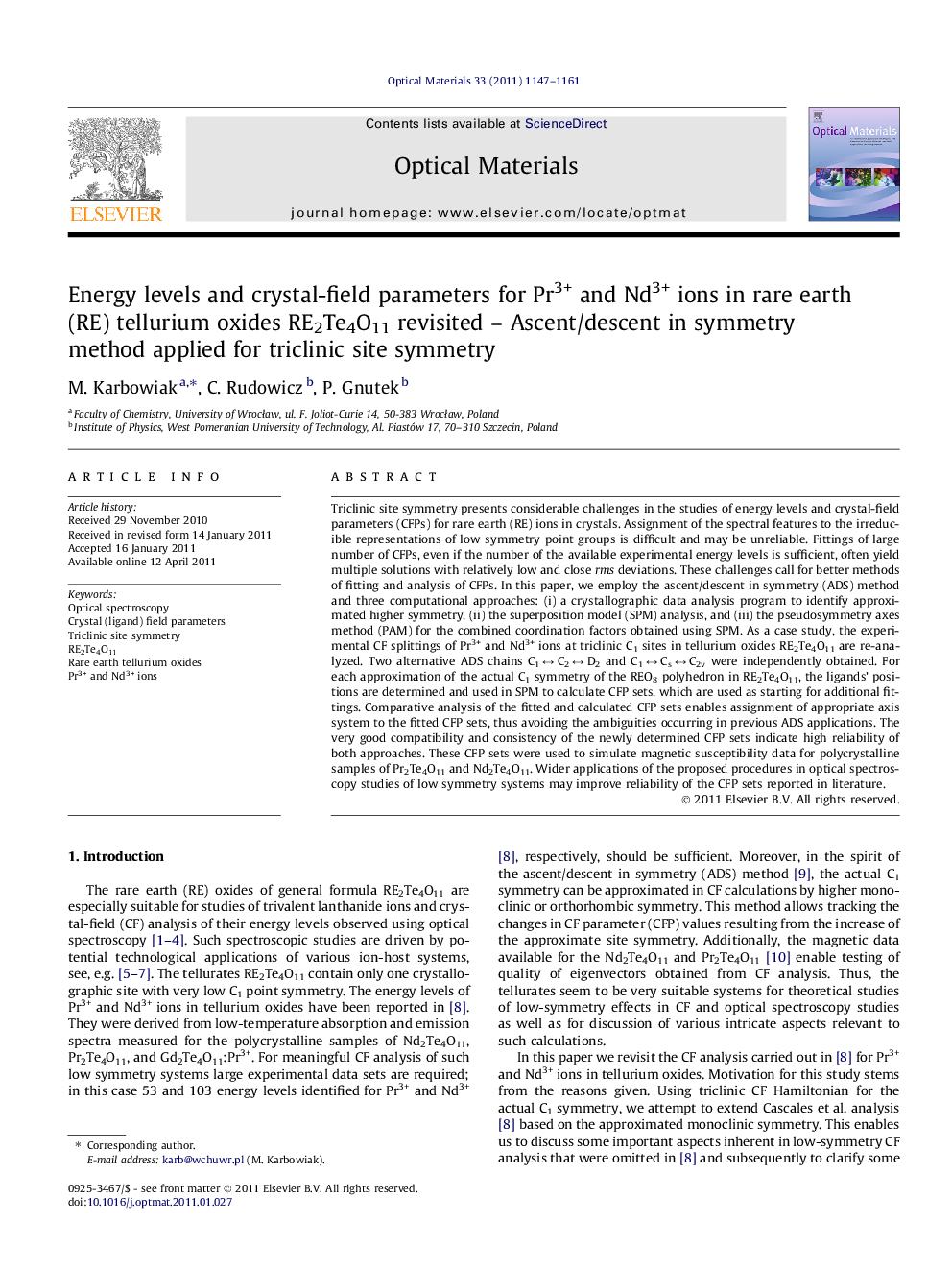| Article ID | Journal | Published Year | Pages | File Type |
|---|---|---|---|---|
| 1494971 | Optical Materials | 2011 | 15 Pages |
Triclinic site symmetry presents considerable challenges in the studies of energy levels and crystal-field parameters (CFPs) for rare earth (RE) ions in crystals. Assignment of the spectral features to the irreducible representations of low symmetry point groups is difficult and may be unreliable. Fittings of large number of CFPs, even if the number of the available experimental energy levels is sufficient, often yield multiple solutions with relatively low and close rms deviations. These challenges call for better methods of fitting and analysis of CFPs. In this paper, we employ the ascent/descent in symmetry (ADS) method and three computational approaches: (i) a crystallographic data analysis program to identify approximated higher symmetry, (ii) the superposition model (SPM) analysis, and (iii) the pseudosymmetry axes method (PAM) for the combined coordination factors obtained using SPM. As a case study, the experimental CF splittings of Pr3+ and Nd3+ ions at triclinic C1 sites in tellurium oxides RE2Te4O11 are re-analyzed. Two alternative ADS chains C1 ↔ C2 ↔ D2 and C1 ↔ Cs ↔ C2v were independently obtained. For each approximation of the actual C1 symmetry of the REO8 polyhedron in RE2Te4O11, the ligands’ positions are determined and used in SPM to calculate CFP sets, which are used as starting for additional fittings. Comparative analysis of the fitted and calculated CFP sets enables assignment of appropriate axis system to the fitted CFP sets, thus avoiding the ambiguities occurring in previous ADS applications. The very good compatibility and consistency of the newly determined CFP sets indicate high reliability of both approaches. These CFP sets were used to simulate magnetic susceptibility data for polycrystalline samples of Pr2Te4O11 and Nd2Te4O11. Wider applications of the proposed procedures in optical spectroscopy studies of low symmetry systems may improve reliability of the CFP sets reported in literature.
► Important aspects relevant to the low-symmetry CF calculations are clarified. ► The ion-host systems that exhibit strong triclinic distortions are considered. ► The procedure for fitting and analysis of CF parameters for such system is proposed. ► Its application in optical spectroscopy studies of low symmetry systems is suggested. ► Such procedure may improve reliability of the CFP sets reported in literature.
